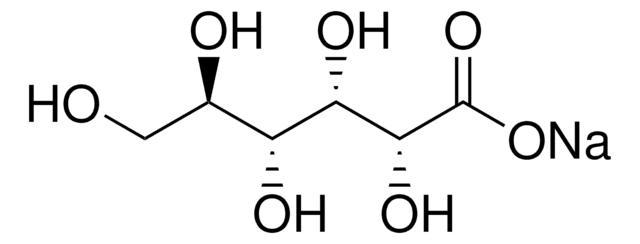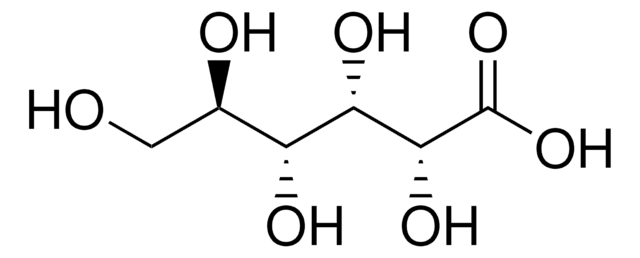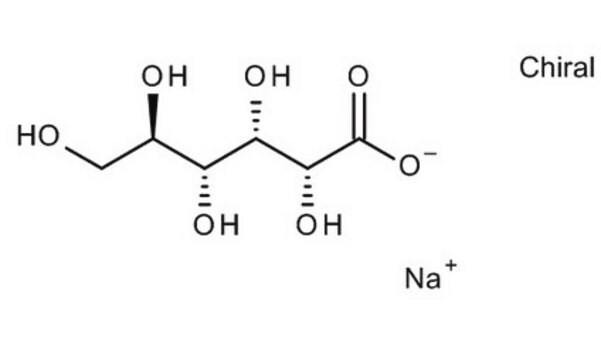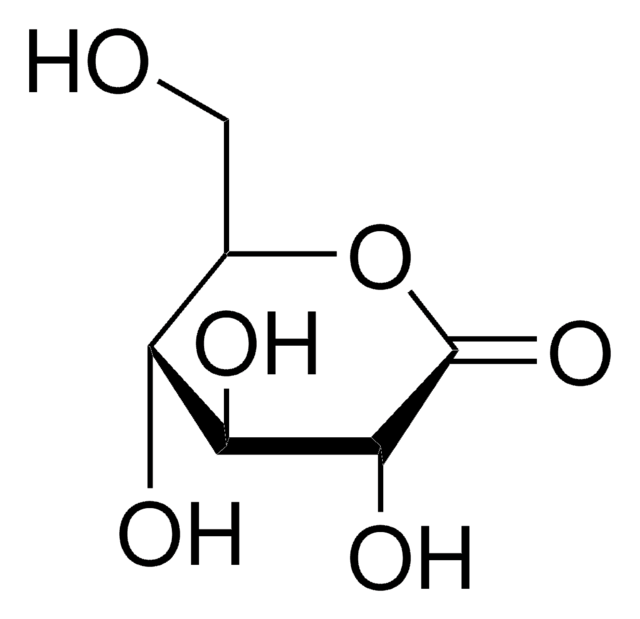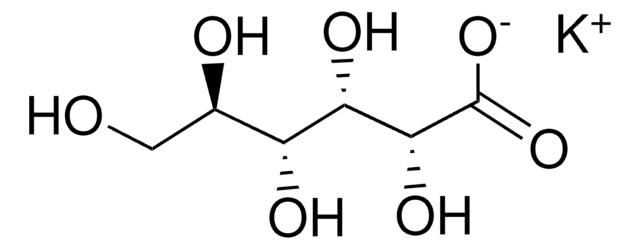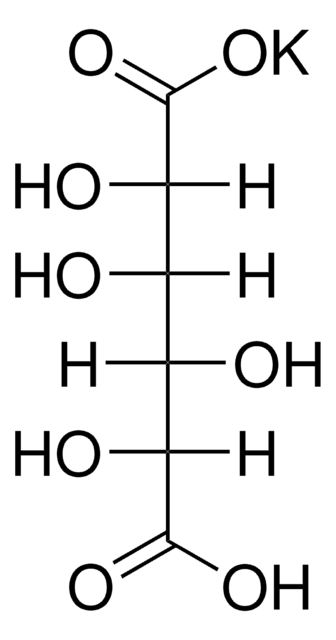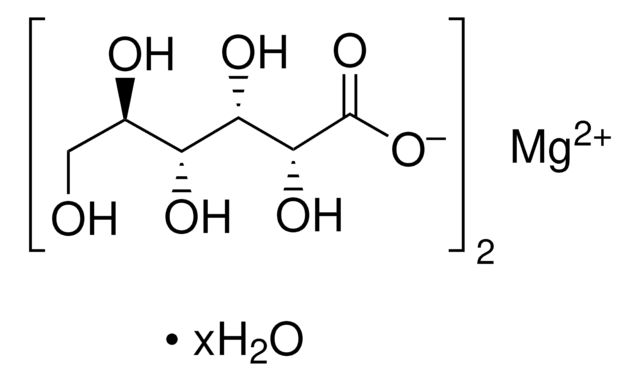G9005
D-Gluconic acid sodium salt
≥99% (HPLC)
Synonym(s):
2,3,4,5,6-Pentahydroxycaproic acid sodium salt, D-Gluconate sodium salt, Sodium D-gluconate
About This Item
Recommended Products
biological source
microbial
Quality Level
Assay
≥99% (HPLC)
form
powder or crystals
technique(s)
HPLC: suitable
color
white to off-white
useful pH range
6.5-7.5
mp
170-175 °C
solubility
590 g/L at 25 °C
application(s)
agriculture
storage temp.
room temp
SMILES string
[Na+].OC[C@@H](O)[C@@H](O)[C@H](O)[C@@H](O)C([O-])=O
InChI
1S/C6H12O7.Na/c7-1-2(8)3(9)4(10)5(11)6(12)13;/h2-5,7-11H,1H2,(H,12,13);/q;+1/p-1/t2-,3-,4+,5-;/m1./s1
InChI key
UPMFZISCCZSDND-JJKGCWMISA-M
Looking for similar products? Visit Product Comparison Guide
Application
- as a component to make synthetic interstitial fluid.
- used as a carbohydrate.
- used as a substitute for sodium chloride to make chlorine (Cl-) free media.
Biochem/physiol Actions
Other Notes
Storage Class Code
11 - Combustible Solids
WGK
WGK 1
Flash Point(F)
Not applicable
Flash Point(C)
Not applicable
Personal Protective Equipment
Choose from one of the most recent versions:
Already Own This Product?
Find documentation for the products that you have recently purchased in the Document Library.
Customers Also Viewed
Our team of scientists has experience in all areas of research including Life Science, Material Science, Chemical Synthesis, Chromatography, Analytical and many others.
Contact Technical Service